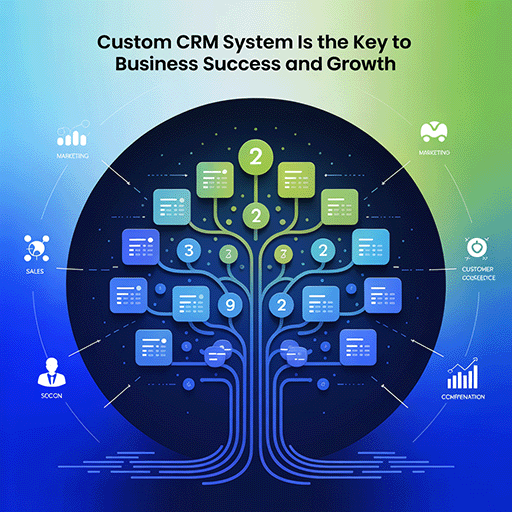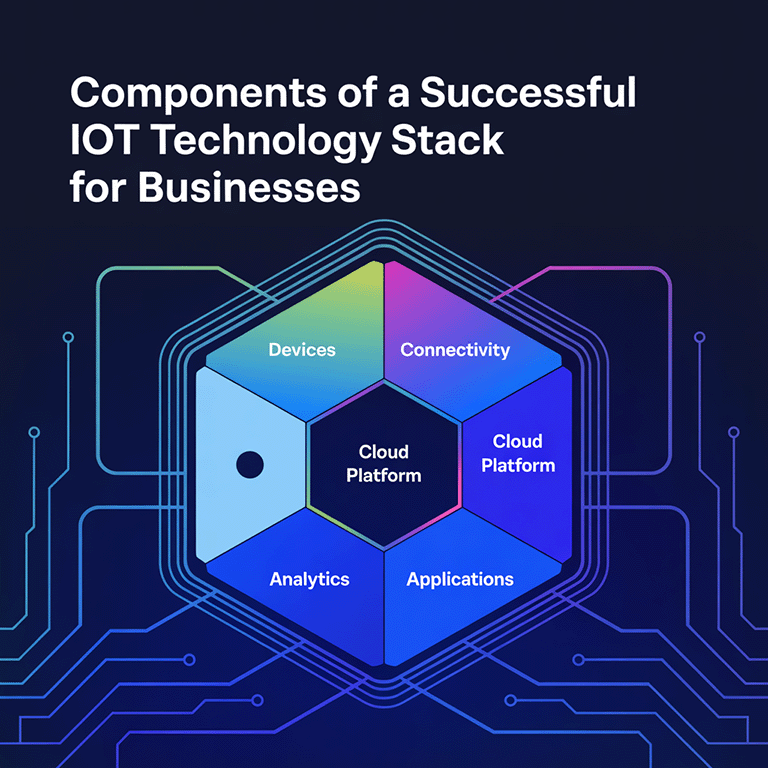Every medical case makes healthcare providers process lots of data to ensure patients get the right medication to improve their physical and mental well-being. From disease registries to health surveys, healthcare workers have to analyze this information and make tough decisions as fast as possible.
But what if a physician could predict critical changes in patients’ health before they grow into a more serious problem? Using predictive analytics, doctors could analyze records and make accurate forecasts.
In this article, we decided to expand on the core benefits of predictive analytics in healthcare and handpick the most successful use cases to unravel the whole potential behind this technology.
Predictive Analytics in the Healthcare Industry: How Does It Work?
Predictive analytics helps clinicians anticipate future events based on the available data using forecasting techniques and modeling. With the help of this data, healthcare providers can identify diseases in the initial stages, make critical decisions, and provide predictive care for at-risk patients.
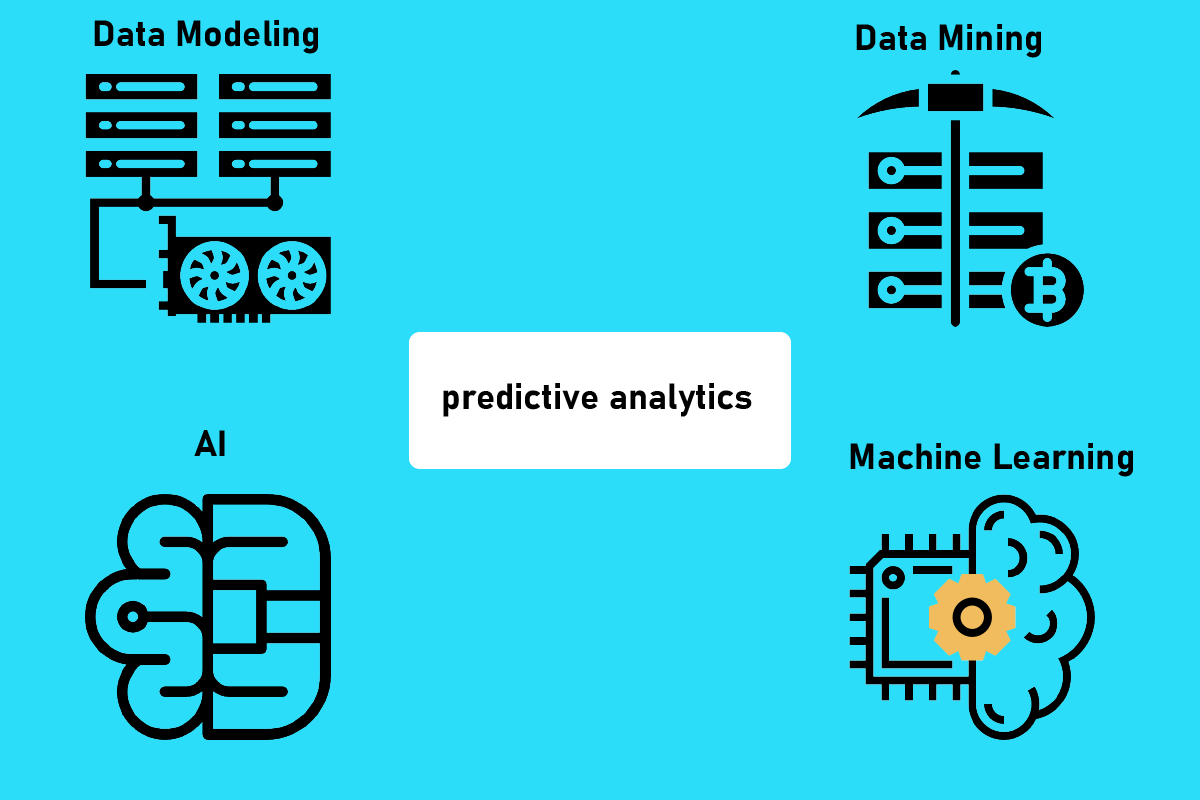
Have a look at the core techniques specialists apply to assess real-time and historical data and make accurate predictions:
-
Data Modeling
This statistical-based tool helps analyze historical data to assess the likelihood of prospective outcomes.
Data modeling in healthcare is used to build a detailed model of how certain data develops over time. Equipped with this model, physicians can detect behavioral patterns to predict patients’ responses to medications and identify the possibility of developing serious mental and physical disorders.
-
Artificial Intelligence
Reproducing human behavior and abilities, AI can manage patient data, eliminating the possibility of human error and saving providers’ time.
Based on historical data, AI-driven predictive analytics enables physicians to anticipate patient flow and improve schedule quality by suggesting changes and best-fit employees.
-
Data Mining
Data mining allows processing a huge amount of data. These data sets are gathered into databases and transformed for analysis.
Data mining enables specialists to compare symptoms and treatment courses and find the most effective medicine for various conditions. It helps standardize treatment methods for serious diseases and speed up the diagnostic process.
-
Machine Learning
Machine learning algorithms can train their system without human involvement. The algorithms evolve over time by analyzing large datasets and identifying their patterns.
As a result, the more data algorithms consume, the more accurate predictions they make. Using machine learning practices, clinicians can make more accurate predictive diagnostics and boost patient experience by anticipating hospital staffing needs.
How Predictive Analytics Helps Healthcare Providers
-
Operation Optimization
Overloaded hospitals cause critical staff shortages that can increase hospital mortality rates. Clinicians can use predictive analytics in the healthcare industry to forecast staffing challenges like burnout and overloaded work schedules before they become more complex and disruptive.
Predictive models help clinicians analyze such factors as the number of staff required for managing patients, seasonal patterns affecting health, and disease outbreaks.
This AI-based technology also enables healthcare providers to speed up the hiring process and look for the most reliable specialists.
-
Chronic Disease Management
Combining machine learning algorithms with remote patient monitoring, physicians can prevent patients with chronic diseases from developing severe complications and flare-ups. Thus, physicians are always aware of their patients’ risks and can contact them to make an appointment as fast as possible.
A predictive model analyzes lab results, patients’ biometric data, and their lifestyle information like smoking history, stress and activity levels, and alcohol consumption.
Using this data, it’s possible to evaluate the possibility of flare-ups and complications in the nearest future and ensure patients get preventive care screenings and follow-up instructions.
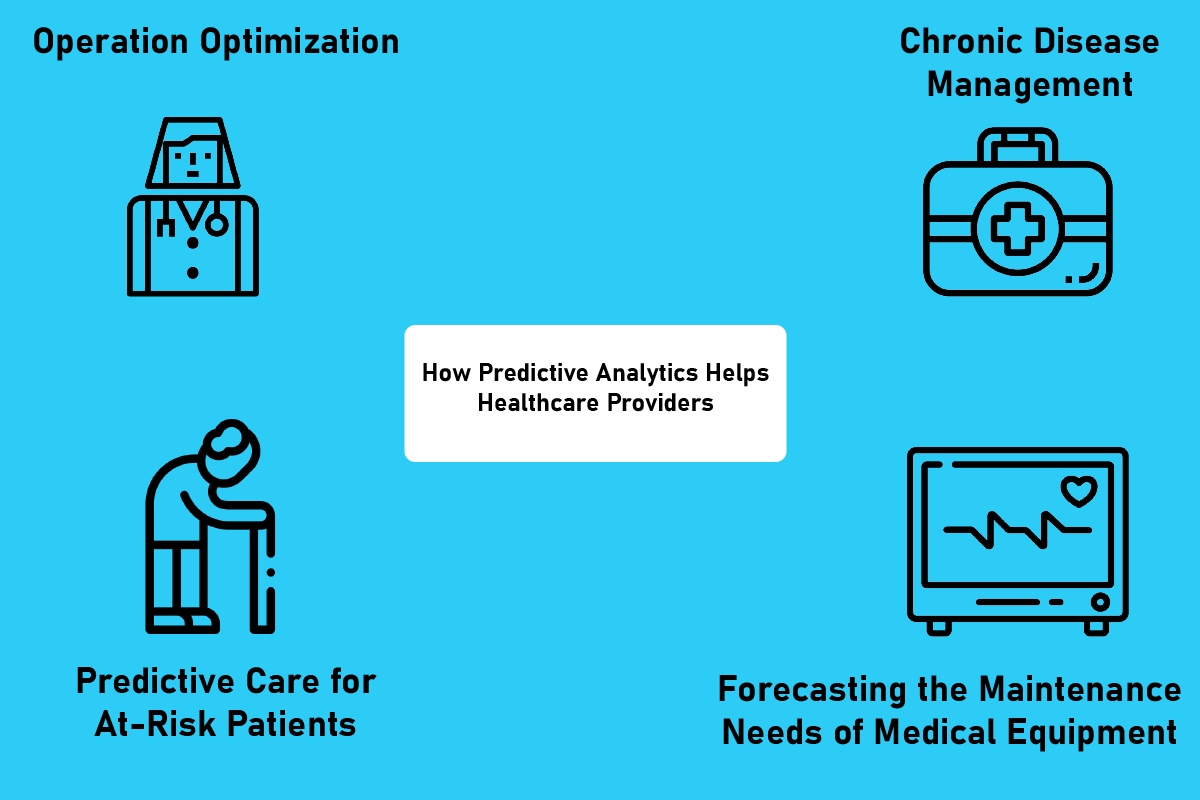
-
Predictive Care for At-Risk Patients
Besides patients with chronic diseases, there are lots of other at-risk patient cohorts that can benefit from predictive models. It can become a lifesaving practice for the elderly and patients discharged after surgery.
Analyzing such factors as family medical history, biometric data, and check-up schedules, it’s much easier to detect common patterns among at-risk patients and prescribe medications that can reduce high-risk conditions.
Historical data analysis in healthcare can help clinicians anticipate falls in older patients and prevent them from serious traumas like hip fractures, head injuries, and broken bones. Healthcare providers can monitor patients and estimate risks remotely to intervene faster and avoid emergency room visits.
-
Forecasting the Maintenance Needs of Medical Equipment
It’s crucial to maintain medical equipment properly to get accurate results and ensure patients have a safe experience and high-quality care.
From surgical fires and anesthesia hazards to defibrillator failures and tube misconnections, these maintenance-related issues can lead to injuries and deaths.
Using predictive analytics, healthcare providers can forecast the maintenance needs in medical equipment and predict potential failures. Analyzing the data from an oxygen flowmeter in an anesthesia machine or electrodes in an ECG machine, a predictive model can detect potential failures before they harm patients.
Top 3 Use Cases of Predictive Analytics in Healthcare
-
Predicting Surgery Outcomes
The Michigan Bariatric Surgery Collaborative built an outcomes calculator to forecast patients’ weight loss and complications after surgery. It is a cross-platform solution, which means patients can use the app on their mobile devices or access the calculator through a web browser.
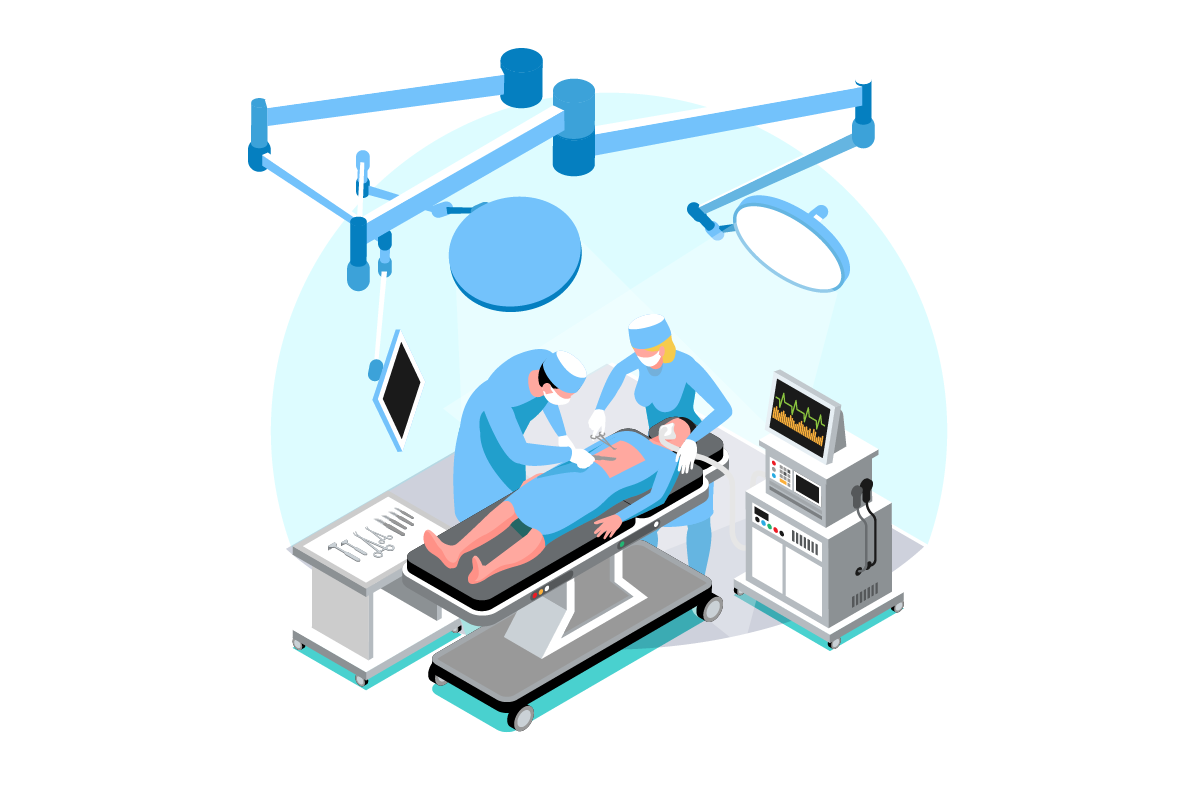
This solution helps people decrease the chance of weight regain after bariatric surgery and lower their risk of such postoperative complications as pneumonia, wound infection, and abscess.
To get personalized risk and benefit graphs, patients have to share information about their age, height, weight, gender, current medication use, procedure type, and smoking history. This tool allowed clinicians from MBSC to lower rates of post-surgical death by 67%.
-
Reducing Hospital Readmissions
The readmission rate highlights the quality of patient care provided at the hospital. If a patient comes back to the hospital within a month after being discharged, in most cases, it means that the provided treatment wasn’t as successful as it was supposed to be.
Clinicians can analyze data to anticipate the readmission probability and ensure patients receive better preventive care.

Clinicians from the University of Kansas Health System wanted to lower hospital readmission for diabetes patients who were three times more likely to be readmitted during 90 days after discharge.
Specialists used predictive analytics to process such data as patients’ age, chronic conditions, smoking history, and length of stay.
It turned out that patients faced multiple issues concerning their chronic conditions and access to follow-up care. Today, diabetes patients can attend informative sessions on medications and communicate with a manager to get follow-up care.
-
Identifying Potential No-Shows
No-show appointments cause a revenue loss of $150 billion annually. To save resources, it’s crucial to understand when a patient is likely to skip an appointment.
Specialists from the Duke University School of Medicine built a solution that processes patients’ electronic health records and detects possible no-shows.
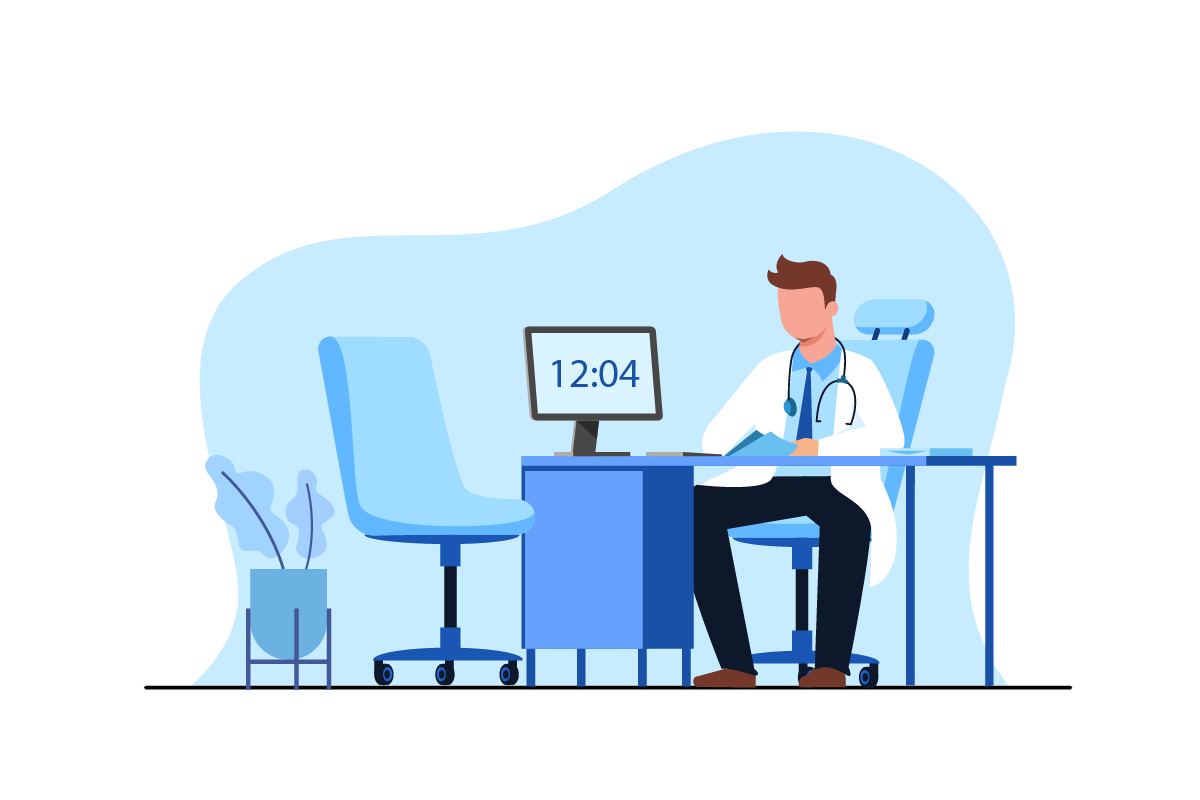
Researchers trained this predictive modeling tool specifically for the Duke health system, making it easier to capture patterns based on the local data. This software detected 4819 patient no-shows within the system, so now physicians can make the most of their clinician hours.
Benefit From Predictive Analytics With LITSLINK!
With predictive analytics, physicians can transform data into meaningful insights, make operations more efficient, and get better patient outcomes.
Besides helping caregivers boost treatment quality, predictive analytics produces meaningful insights to reduce hospital readmissions and detect potential no-shows.
If you want to go big and build clinical software solutions to take your business to the next level, but don’t have enough technical resources, contact LITSLINK right away. Our seasoned specialists will share their expertise and help you build a sophisticated solution tailored to your needs.


